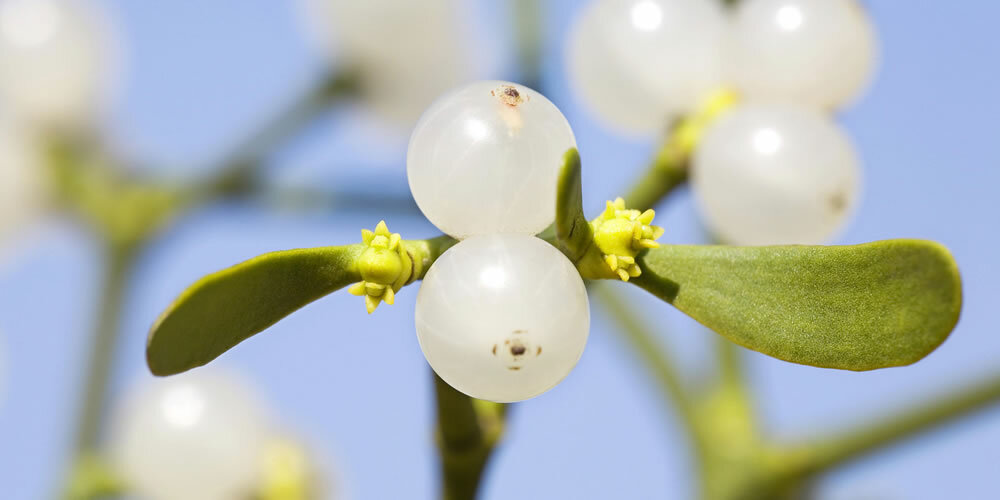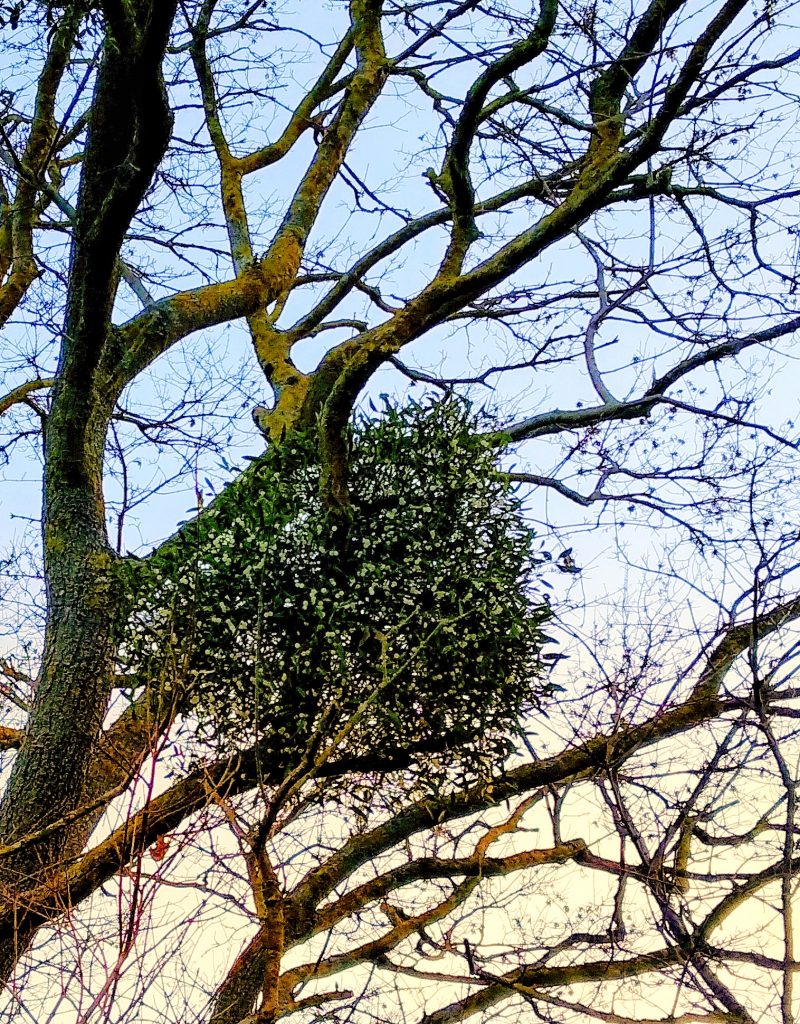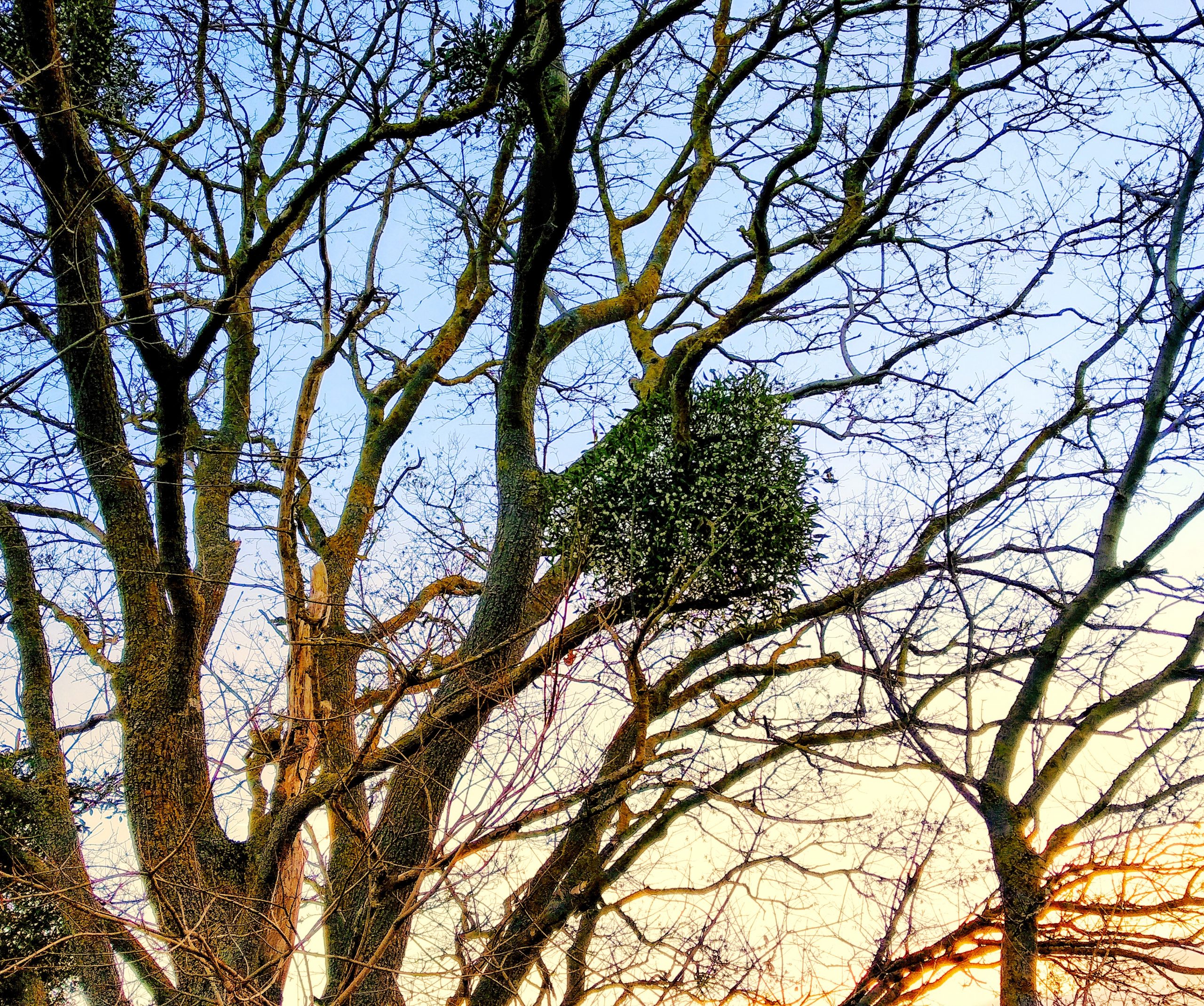Widespread throughout Europe and especially in France where it is still part of the official pharmacopoeia, the Viscum (Viscum album) is an evergreen shrub with a characteristic globular shape that grows as a semi-parasite on apple trees, maples, birches, elms, poplars, firs and, rarely, on oaks. Due to their stickiness, seeds scattered by birds and wind stick to the bark of host trees. They form small, strong rhizomes that penetrate the bark of the trees and extract the necessary nutrients. Germination cannot occur in the soil. Current botanical research is studying the interaction between mistletoe and the host plant. It appears that substances produced by the shrub positively affect the health of the host.
The central stem of mistletoe is lignified, and the branches remain green and elastic, forming a straight, concentric angular pattern. The leathery, oblong leaves face upward and outward. Flowering takes place in spring and it is not showy, fruits ripen between November and December and contain a single seed wrapped by whitish and sticky mucilage. Besides viscotoxins, the plant also contains acetylcholine, flavonoids and polysaccharides.
Mistletoe is one of the most mysterious and fascinating medicinal plants, pagan symbol of lightning. From Homer to Virgil, from Pliny to Celtic mythology and Druidic tradition, ancient legends and myths of heroes tell of its magical powers. Particularly beautiful is the myth of Baldur, immortal son of Odin and Freia. He was mortally pierced by a branch of mistletoe, the only plant that does not belong to the earthly plant world!

In the constellation of Sagittarius, between Christmas and New Year’s Day, druids used to collect mistletoe to cure the ills of body and spirit. According to the Central European folk tradition, mistletoe sprigs were used to find water veins and hidden treasures, to protect houses and stables from evil presences.
We can therefore imagine that popular medicine in the past used mistletoe decoctions to cure a wide variety of ailments, from gout to epilepsy, from bubonic plague to ulcerous wounds. According to modern phytotherapy, mistletoe is one of the vagotonic agents and is indicated both in the treatment of arthritis, tendinitis, neuralgia and dermatitis, and for psychological disorders such as depression due to adaptation or fatigue. It has been shown that homeopathic dilutions of mistletoe help to better withstand the excess of stimuli to which we are exposed in the modern frenzy.
Please consider that Mistletoe extracts should be used internally only on the advice of an experienced phytotherapist, as the plant can be toxic in its various parts.
Great naturopaths of the past as Kneipp and Weidinger recommended maniluviums and foot baths infused with leaves and branches to complete the treatment of the circulatory system, to strengthen the heart.
In rheumatic diseases bathes with mistletoes extracts such as teas or fluid extracts and also salves are very helpful.
Rudolf Steiner’s intuition about the antitumor and immunostimulating action of mistletoe is, as often, unprecedented. In the twenties of the last century, together with Ita Wegmann, he started the research, preparation and testing of new anthroposophical drugs based on mistletoe.
Those who wish to deepen their knowledge of the plant according to the criteria of anthroposophical research should consult the third volume of Wilhem Pelikan („Heilpflanzenkunde“ Verlag am Goetheanum, CH Dornach), which contains an accurate and complete description of its habitat. Striking aspects such as the so-called “anti-rhythmicity” (it bears fruit in winter), the extraordinary vegetative quality (it contains abundant chlorophyll in all plant parts) and the location (germination only on host trees). Research on mistletoe is in full swing in many European and foreign centers and clinics.
Karin Mecozzi HWB: Chapter “Central Apennines” San Severino Marche, Italy,
Published soon on HERBALISTS WITHOUT BORDERS / newsletter / -> www.hwbglobal.org


